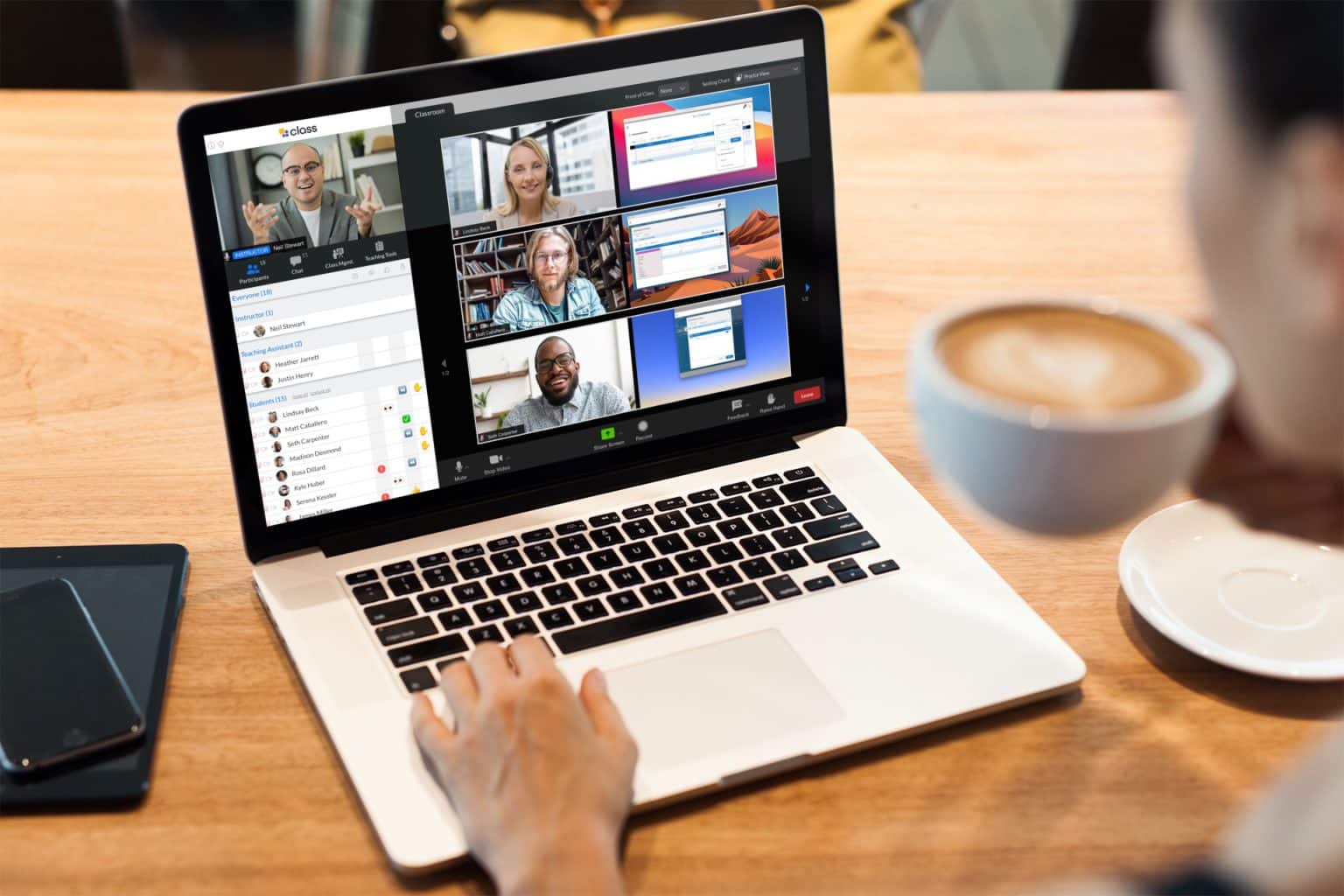
Class is the next generation virtual classroom for K-12, higher education, government agencies, and the workplace. Contact us today to schedule your live demo and see Class in action.

Class is the next generation virtual classroom for K-12, higher education, government agencies, and the workplace. Contact us today to schedule your live demo and see Class in action.

With an increase in remote and hybrid work, more employers have turned to adopt practices traditionally delivered in higher education and even grade school settings. One of those practices is blended learning in the workplace.
What is blended learning in the workplace? It is a form of training that uses multiple methods—both traditional, or in-person, and digital—and both synchronous and asynchronous—to deliver training. It’s been a boon for businesses migrating to a hybrid workplace model because of its flexibility and accessibility.
That’s because blended learning is site agnostic—it doesn’t matter where employees are, at work, at home, or somewhere else. Access is seamless and readily available.
“Blended learning makes use of in-person and multimedia-based learning that has employees engage in professional development activities both in the office and while working from home,” says Trevor Larson, CEO of Nectar, an employee recognition and rewards software developer. That’s been a big boom during the pandemic, of course, but even in a non-pandemic situation, blended learning “can help improve training because it combines different types of learning, including hands-on, virtual simulations, group and one-on-one sessions,” Larson says. In addition, he says, “it’s more multifaceted and more geared towards employees with different learning styles.”
Employee online learning has been around for some time now. But lessons learned during the pandemic about how blending learning in the workplace could benefit employees wherever they are offering a wide range of benefits to organizations of all sizes and types.
The promise of blended learning is that not only can it be more flexible, but it can also improve workplace training.
Blended learning, says Todd Moran, Chief Learning Officer at NovoEd, “drives better collaboration across the learning experience, greater social cohesion among workers and ultimately better results for the business.” In addition, he says, blended learning boosts learning accessibility—a key to supporting today’s remote and hybrid workforces.
The potential broad reach of blended learning also holds benefits for organizations.
“Hybrid, blended learning means they can think more broadly and internationally, smashing through geographical borders,” Moran notes. But, he says, it’s important to create “a truly engaging experience for teachers and learners alike. If digital replacement was the immediate solution right after the pandemic outbreak, it’s now time to think and act on the true digital transformation.”
Ewelina Melon, head of people at Tidio, says that workplace blended learning “gives employees the enormous opportunity to take part in any courses from over the world and tailor them perfectly to their needs.” Businesses that decide to base their employee training program on a blended learning method, she says, can offer their employees an endless amount of growth opportunities and easily monitor their progress.
It’s important, though, that organizations think strategically about how to implement blended learning for workplace training and take some important steps to reap its benefits. That means making some improvements over how blended learning may have been used in the past.

First, make sure employees are familiar with the tools they’ll need to access and participate in training. It’s important, says Larson, to provide employees with experience using the tools and software that your blended learning efforts will incorporate. Don’t just leave it to chance or assume that they will be able to navigate these tools without instruction, training and experience.
Then, consider how blended learning for workplace training could be made more engaging.
In the typical blended learning model, learners review static materials before attending the live session, Moran notes. But, he says, there are opportunities for improvement. “One area that is often overlooked is the opportunity to design feedback and contextual discussions into these courses,” he says. “In the blended model, learners have many more possibilities to apply, practice and share feedback. This deliberate application and reinforcement must be incorporated into the learning process.”
Larson recommends keeping class sizes small to encourage better interaction and engagement. “Using Zoom and other virtual communication tools can work well, but they suffer from diminishing returns when there are too many people in a meeting at once,” he says.
John Copeland is director of sales, learning and development with Barco. At Barco, says Copeland, “we advocate for setting a long-term strategy in place and moving from digital replacement to digital transformation, with training objectives in mind and supported by technology.” When doing so, he recommends considering the following elements to ensure positive training outcomes:
Melon adds that blended learning can be boosted by taking full advantage of Zoom features to make workplace training more efficient and engaging. For instance:
The flexibility afforded by a blended learning approach can help to overcome some stigma that the concept may still hold.
As Moran notes: “While some L&D professionals might be wary to adopt this approach because of the stereotype that employees are learning alone, the asynchronous aspect of blended learning is actually an opportunity for employees to practice and apply their learnings on the job, get feedback and work with their manager or mentor to strengthen their skills.”
“Hybrid work and the flexibility it implies as a future major trend will have multiple, company-wide implications, including an impact on HR and L&D – both needing to prepare for training their workforces in a different way than before,” says Copeland.
Blended learning in the workplace gives employees the flexibility to choose when and where they want to learn. This personalizes the learning experience and boosts the odds that the learning will achieve desired results, which can translate directly to on-the-job performance gains.

Class is the next generation virtual classroom for K-12, higher education, government agencies, and the workplace. Contact us today to schedule your live demo and see Class in action.

Class is the next generation virtual classroom for K-12, higher education, government agencies, and the workplace. Contact us today to schedule your live demo and see Class in action.
Get our insights, tips, and best practices delivered to your inbox

Sign up for a product demo today to learn how Class’s virtual classroom powers digital transformation at your organization.

Features
Platforms
Integrations
Additional Products